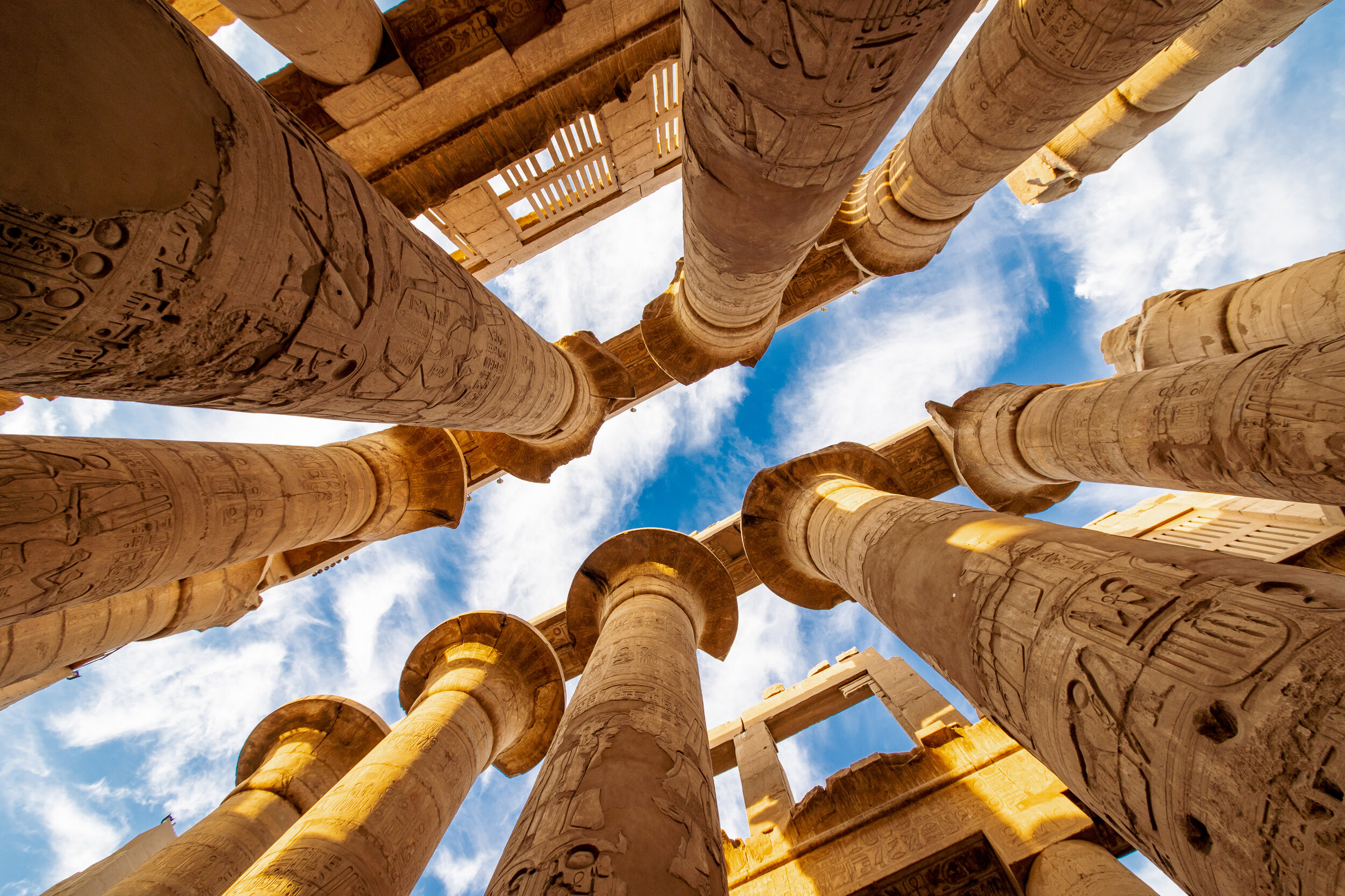Travel Tuesday - Luxor, Egypt
“A beautiful thing is never perfect.”
Luxor, Egypt has been on my mind for quite some time. I planned a trip to Egypt back in 2019 and never had the chance to go with life’s plans coming up, but it’s been a gem in my mind ever since I started looking it.
Luxor, also called, El-Aksur, is about 160 square miles and has a population of about 1.2 million people. Luxor is a relatively safe place to visit and is home to some of the BEST Egyptian ruins such as the Luxor Temple, Valley of the Kings, and Valley of the Queens. It is a strikingly beautiful area alongside the Nile river and was founded in 1400 BCE, during the peak of the Egyptian Civiliation. Alexander The Great was apparently crowned in Luxor, as well, where remnants of the Roman era still exist today. An obelisk from Luxor now resides in Paris, as well.
Anyways, let’s get into some of the more incredible things about Luxor, which is VERY HIGH on my bucket list. I hope some parts of this blog will inspire you to visit, as well.
If you want to read up on Luxor, read the Wiki page here
Who constructed the Luxor Temple?
Pharaoh Amenhotep III, one of the great builders of ancient Egypt, was responsible for starting the construction of the Luxor temple during the New Kingdom (1390-1352 BC) following by Tutankhamun (1336-27 BC), then Horemheb (1323-1295 BC) and then finished by Rameses II (1279-13 BC).
The Luxor temple appears to be one of the many projects that Ramesses II commissioned during his long reign. Ramesses II also repurposed many existing monuments to add to his own reputation. The statuary and carvings that decorate the temple today mainly feature Ramses II.
Luxor Temple
The Ancient Ruins
The southern part of Thebes grew up around a beautiful temple dedicated to Amon, king of the gods, his consort Mut, and their son Khons. Commissioned by King Amenhotep III (Amenophis III; reigned 1390–53 BCE) of the late 18th dynasty, the temple was built close to the Nile River and parallel with the bank and is known today as the Temple of Luxor. An avenue of sphinxes connected it to the Great Temple of Amon at Karnak. The modern name Luxor (Arabic: Al-Uqṣur) means “The Palaces” or perhaps “The Forts,” from the Roman castra.
A small pavilion is all that is left of previous building on the site, though there probably was a temple there earlier in the 18th dynasty if not before. Amenhotep III’s temple was completed by Tutankhamen (reigned 1333–23) and Horemheb (1319–1292). Ramses II (1279–13) added another court, a pylon, and obelisks; smaller additions were made to the temple in Ptolemaic times. Its hypostyle hall was at one time converted into a Christian church, and the remains of another Coptic church can be seen to the west of it.
A small pavilion is all that is left of previous building on the site, though there probably was a temple there earlier in the 18th dynasty if not before. Amenhotep III’s temple was completed by Tutankhamen (reigned 1333–23) and Horemheb (1319–1292). Ramses II (1279–13) added another court, a pylon, and obelisks; smaller additions were made to the temple in Ptolemaic times. Its hypostyle hall was at one time converted into a Christian church, and the remains of another Coptic church can be seen to the west of it.
Luxor Temple
The original part of the Temple of Luxor consisted of a large peristyle court and a complex of halls and chambers beyond. In one hall is a granite shrine of Alexander the Great. The great peristyle forecourt is surrounded on three sides by a double row of graceful papyrus-cluster columns, their capitals imitating the umbels of the papyrus plant in bud. An entrance flanked by the towers of a pylon was planned for the north end, but this design was altered, and, instead, the most striking feature of the temple, a majestic colonnade of 14 pillars, 52 feet (16 metres) high, was added. This colonnade, which also has papyrus-umbel capitals, may have been intended for the central nave of a hypostyle hall similar to that at Karnak, but the side aisles were not built; instead, enclosing walls were built down either side. Ramses II added an outer court, decorated with colossal statues of himself between the pillars of a double colonnade, and a lofty pylon on which he depicted festival scenes and episodes from his wars in Syria. In front of the pylon were colossal statues of the pharaoh (some of which remain) and a pair of obelisks, one of which still stands; the other was removed in 1831 and re-erected in the Place de la Concorde in Paris.
Valley of the Kings - Luxor, Egypt
Luxor, together with other Theban sites—Karnak, the Valley of the Queens, and the Valley of the Kings—was designated a UNESCO World Heritage site in 1979. Excavations and preservation efforts have been ongoing. In 1988 the Egyptian Antiquities Organization uncovered numerous 18th-dynasty statues at the court of Amenhotep III, and work to excavate and preserve the court continued through the following decades. In the 21st century a project began to excavate the avenue of sphinxes between the Temple of Luxor and the Great Temple of Amon at Karnak.
The contemporary city, a market town for the surrounding agricultural district, has grown north, south, and east of the temple. It has a number of churches, as a large proportion of the population is Christian, and mosques. There is also a railway station on the Cairo-Aswān railroad, an airport, and ferry service to the western bank. The Luxor Museum was opened in 1975. Numerous tourist facilities were built in the latter part of the 20th century.
When to Go
The Luxor Temple's location is in the heart of Luxor which makes it a very easy site to visit at almost any time of the day. Even when it is not open to visitors, the temple is visible during a stroll down the Nile corniche or through downtown Luxor. Either way, you can really to go Egypt any time of year, but most people do go and visit during the summer months, which is also when it is hottest. There is, ideally, never a bad time to visit Egypt.
We recommend visiting the temple around sunset when you are in Luxor. The complex is beautifully lit in order to highlight the relief carvings as the light wanes and the columns emblazoned against the evening sky making it for an incredible photo opportunity, and no doubt, you will enjoy them greatly!
Luxor itself means, ‘The Palaces’ and during ancient times used to be known as, ‘The City of Hundred Doors,’ and is considered to be the globe’s greatest open-air museum for the fact on an area of 417 square miles and has some of Egypt’s best kept temples, such as the Valley of the Kings, Karnak Temple, Queen Hatshepsut and more.
On average, the climate in Luxor is quite sunny and hot with average temperatures of about 40 C (104 F) in the summer and about 22 C (71.6 F) during the winter months, making it an ideal destination to visit anytime of the year.
For more info on visiting Luxor, check out Egypt Tours here.
TripsInEgypt.com also has an amazing page full of information you can use on your visit to Luxor.
Overall
Luxor lands high on my list of places to go. You can hop on a Nile cruise and see all the wonders of Egypt on a several-day tour, or you can take a train down to Luxor from Cairo. I’ve looked into both options and Egypt, without a doubt, is a place that should be high on everyone’s bucket list. You cannot go back in time 5,000 years and not be in total shock and awe at the wonders of the world. Egypt holds the key to so many mysteries that have yet to be uncovered, and the more I try and look into them, the more I am drawn to visit a place like Luxor….how did they build it?
What knowledge did they have back then?
The obstacles and challenges these civilizations faced seem to outweigh those of our current predicaments. Their faith, their resolve, their knowledge….all of it, lost in the sands of time, left for us to traipse through….
Take a peek at the top 10 things to do in Luxor and let me know if you’re keen to travel here, or, if you’ve been, let me know how it is.
See you out there.
Guest blog posts & link additions, please email me.
~ Cam King // info@ckcollective.co







Luxor, Egypt lands on our list of places to travel to this week. See what we have in store for this incredible place in this blog.